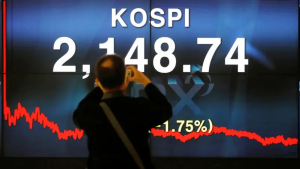Indian Energy Exchange (NS:IIAN) (IEX) is under scrutiny as analysts debate the sustainability of its business model. While the company has witnessed impressive volume growth, three key factors are shaping the outlook for IEX—volumes, transaction charges, and market coupling.
IEX has seen stellar volume growth in the July-September period, with an impressive 32% year-over-year increase (17% excluding Renewable Energy Certificates or REC (NS:RECM)). Several drivers are contributing to this volume spike:
- Power Prices: When power prices exceed INR 5 per kWh, IEX volumes tend to dip, and when they drop below, volumes rise. With the monsoon season ending, a moderation in volume growth is expected post-mid-October.
- Coal Availability: Coal India’s strong production continues to fuel the availability of power, further boosting volumes on IEX.
- New Power Plants: While no major new merchant power plants are on the horizon for the next two years, complex renewable energy plants expected to come online could contribute to IEX volumes in the future.
Much of the recent volume growth has come from trading in Renewable Energy Certificates (RECs), which currently trade at INR 0.11 per kWh. However, there are concerns over IEX’s ability to maintain a 4 paisa per kWh commission on this.
The primary concern for analysts revolves around IEX's transaction fees, which are 4 paisa per kWh—around 1% of the total power price. This is significantly higher than the rates in Europe, where transaction charges are less than 1/5th of IEX’s rate. Moreover, a directive from the Central Electricity Regulatory Commission (CERC) suggests that transaction charges could come under further scrutiny and may be revised based on international benchmarks. The timing of these changes remains uncertain, but a discussion on this matter could arise soon.
Market coupling remains a gray area. Although government intent to pursue shadow coupling has been reported, the impact would likely be limited to Real-Time Market (RTM) and Security Constrained Economic Dispatch (SCED), which currently account for 30% of IEX’s volume. The odds of market coupling implementation are seen as 50:50. If it happens, it could lead to a reduction in transaction charges, fostering competition in the Day-Ahead Market (DAM) and RTM.
Bernstein has issued an underperformer rating for IEX, with a price target of INR 130, representing a 38% downside. Other analysts, though not as bearish, have also tempered expectations, with an average target of INR 205, close to the current market price of INR 206.2.











